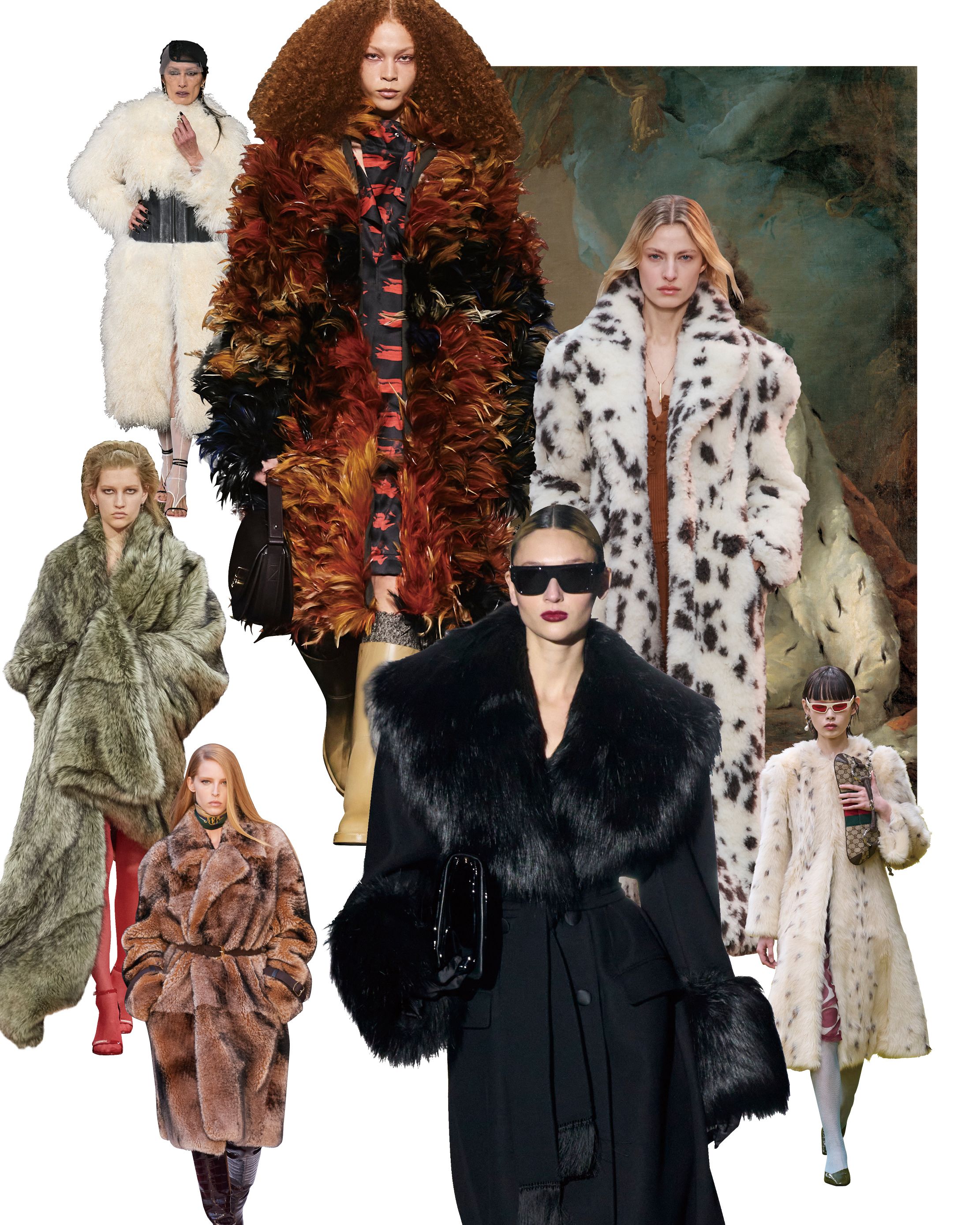

The notes also underscored that the design team, described as longtime members of the Gucci house and who did not come out at the end of the show, explored the concept of “improvisation,” as “an act of collaboration” and as “a constructive tool for creation” that requires finely tuned skills and knowledge. Press notes admitted there were references to Gucci’s archives, from the storied bamboo bag to the crystal GG in a lacquered interpretation of the brand’s coated monogram canvas from the 1970s, placed for example on round-toed soft ankle boots. A taupe ruffled chiffon blouse, checkered wool skirts with front slits or the fluffy Princetown slippers, as well as the sparkly jacket embroidered with sequined scallops were at least reminiscent of Michele’s days. Cue the crystal-embossed GG denim pants and the Piston Lock detail originally created by Ford or the sleek blazers in a pastel palette, horsebit loafers and roomy Jackie bags that harked back to Giannini’s jet-set days. Instead, this archive-driven lineup prepared by the in-house team leaned on the designers who preceded him, from Tom Ford to Frida Giannini. Before the show, observers wondered what kind of collection the brand would present on Friday, the first lineup without Alessandro Michele? Would the house start with a clean slate? Would it surprise with a completely new aesthetics, just as it did when the former creative director took the reins eight years ago? No to the latter question, but there were only a few signs of his tenure. These include works by Liliana Moro, Franco Mazzucchelli, Alighiero Boetti, Matilde Cassani, Jonny Niesche, Massimo Uberti, Joshua Woolford, Simon Callery and Tim Etchells (Blaasmo expresses a desire to ‘facilitate a dialogue between young talent and established artists’).From the first outfit - a plain pair of tan trousers with a T-shirt - it was clear Gucci is heading in a new direction and the guessing game was over. For its opening, art advisor and curator Truls Blaasmo has selected a number of pieces to decorate the space, with a particular thematic focus on Italian artists, particularly those whose works include geometric motifs, primary colours, and textural elements.

The store also recalls its roots as a gallery – first opened in 1913, it was formerly home to art dealer Colnaghi – with a selection of artworks dotted throughout the store.


It draws inspiration from ‘Gucci Galleria’, 1977-founded space above Gucci’s store in Beverly Hills, Los Angeles (‘perhaps the most luxurious place to shop in the entire world’, as it was slated at the time) which was accessed via a crystal-and-bronze elevator and opened with a special leather key. The ‘Gucci Salon’, meanwhile, is the first such space in Europe, an invite-only service that recalls traditional couture salons, whereby clients can shop in a private room the house says will be specially curated for each visitor.
#Gucci runway archive
Another space is titled ‘The Tudor Room’, named for its wood-panelled walls – each one carefully restored by the house – and featuring pieces from the Gucci archive in Florence, spanning the 1930s to the 1980s.


 0 kommentar(er)
0 kommentar(er)
